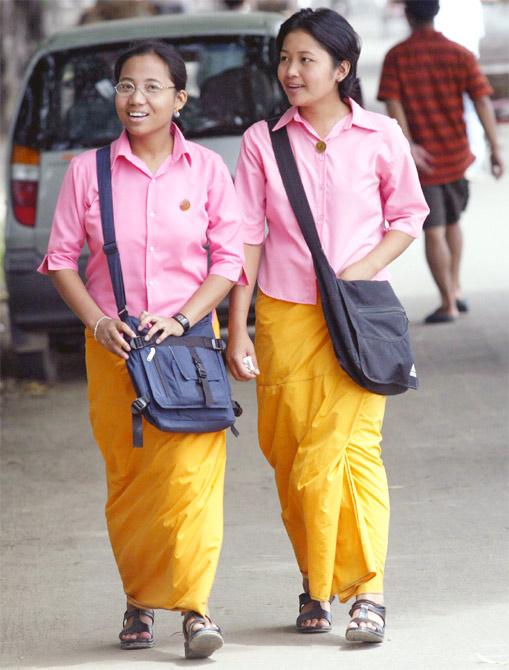 | « Back to article | Print this article |
'My vision for India is where every citizen is equal in the eyes of one law'
'How many who celebrate India's Republic Day and Independence Day know that the Indian tri-colour was first unfurled in Moirang in Manipur by the Indian National Army in 1944?
Just as 'North India' or/and 'South India' refers to a geographical entity in the country, so also 'North East India' for me. When someone uses the term to describe one homogenous entity, it makes me sad for the lack of understanding and the opportunity lost in knowing a region that has a rich history of multi-culturalism, biodiversity and national history,' says Chitra Ahanthem, the well-known Imphal-based journalist.
The North-Eastern states of the country continue to be isolated not only in terms of poor connectivity but because of the lack of engagement with the people, its cultures and the issues.
Many states in the region are yet to be on the country's rail map even as many are still to have air connectivity. It does not help that mainstream national media gets to see mention of the region only in terms of short and cursory news blips on violence, blood and gore or that many of the core issues that people of the region face in their lives are left out of any public discussion and concern.
How many who celebrate India's Republic Day and Independence Day know that the Indian tri-colour was first unfurled in Moirang in Manipur by the Indian National Army in 1944?
The mainstream national media has a huge role to play in connecting the eight states of the North-East with the rest of the country.
Just as 'North India' or/and 'South India' refers to a geographical entity in the country, so also 'North East India' for me.
When someone uses the term to describe one homogenous entity, it makes me feel sad for the lack of understanding and the opportunity lost in knowing about a region that has a rich history of multi-culturalism, biodiversity and national history.
What I love most about India is its rich diversity. It is what makes us unique. But only if this diversity is given due respect can we all move forward.
The colour and chaos of India, its diversity in terms of food and cuisine, art and architecture, its terrain ranging from snow capped mountains along the Himalayas to the deserts of Rajasthan, the rocks of Hampi, the different temple architecture across the country, the texture of textiles, its handlooms.
Just too many things make India unique!
The lack of effective institutional delivery system be it health care, education and welfare schemes need urgent attention. The 'Babu' culture and red tapism get in the way of the country getting ahead.
The levels of corruption and slow process of government processes bogs down the pace of the country and makes citizens cynical.
Travelling around the country and living out of one's comfort zones in remote areas I feel can be one way of bringing about an appreciation for how the 'other' India lives.
I love Delhi because of my siblings who are there and a whole gang of friends and colleagues.
Kolkata is another favourite because of the old feel in some places, not to forget the food spread!
The Indian food that I love is fish tenga of Assam, shorshe ilish of Bengal; Manipur's kangshoi (vegetable broth/stew) and iromba (mashed veggies) which are made with fermented fish).
My vision of for India is that of a nation where every citizen is deemed equal in the eyes of one law with no impunity given in the garb of 'national security', that no differences be meted on how different one looks or dresses.
 Chitra Ahanthem is Associate Editor, Imphal Free Press. She was recently awarded the Laadli media award for gender sensitivity (2012-2013) that she could not receive because the award organisers asked her to travel by train from Imphal which is yet to find a place on India's rail map.
Chitra Ahanthem is Associate Editor, Imphal Free Press. She was recently awarded the Laadli media award for gender sensitivity (2012-2013) that she could not receive because the award organisers asked her to travel by train from Imphal which is yet to find a place on India's rail map.
The complete series: Why I love India
